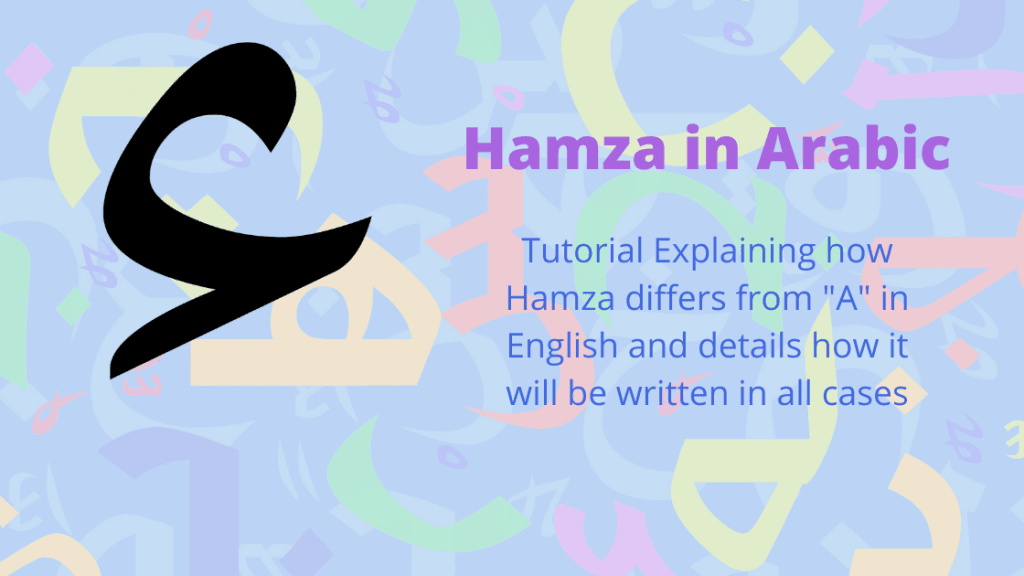This tutorial explains what the letter Hamza is, how it differs from “A” in English, and exactly how the letter Hamza will be written in different cases.

Table of Contents
Intro: About the Letter Hamza in Arabic
Hamza sounds like the letter A, but it’s NOT a vowel. (Fatha is the A vowel in Arabic). Hamza is just a consonant. There is no equivalent consonant in English.
It sounds like the “AAAA” sound you make when you’re thinking. If you want this sound in English, you just use the vowel A, like in the word “Apple”
In Arabic, if we pronounce the word “Apple”, we don’t say we’re starting with a Fatha vowel. We say we’re starting with a Hamza and the Hamza has a Fatha after it
So, in Arabic, the sound A as in “Apple” is really a combination of a Hamza consonant followed by a Fatha vowel. In English, the whole sequence is considered a vowel.
Ways in Which a Hamza can be Written
Hamza is written in one of four ways:
· by itself on the line, as in جاءَ
· on a ياء, as in سُئِلَ
· on a واو, as in سُؤال
· on an الف, as in سَأَلَ
In order to learn the rules that govern which of these forms will be used, we consider the Hamza as it appears in the beginning of a word, at the end, and in the middle. But note that these rules may have exceptions and this is merely a guideline or rule of thumb.
Word Initial
1. The Hamza will always be written on an الف. This is despite the vowel on it and despite any preceding particles (like the definite article, conjunctions, etc).
Examples | |||
والإِسْتِقْرار | إِقامة | أُقيمَ | أَقامَ |
Word Internal
To facilitate the learning of these rules, consider the following hierarchy of vowels in the language:
Priority Low | Priority Medium | Priority High |
فتحة | و or ضمة | ي or كسرة |
1. If the Hamza is preceded and or followed by ياء or كسرة, it’s written on a ياء.
Examples | |||
لُـئَيْم | سُئِلَ | هَيْـئَة | جِئْتُ |
2. If there is no ياء or كسرة in the vicinity, then if the Hamza is preceded and or followed by واو or ضمة, it’s written on a واو.
Examples | |||
تَـؤَوَّلَ | يَؤُم | اِسْتَوْؤَرَ
* | بُـؤْس |
3. If there are none of those vowels in the vicinity, then if the Hamza is preceded and or followed by الف or فتحة, it’s written on an الف.
Examples | ||
رَأَى | * | رَأْس |
* When a Hamza has (is followed by) a فتحة and is preceded by a long vowel الف or واو, it is written on the line:
Examples | |
مُرُوْءَة | جاءَت |
There are plenty of exceptions. Consider, for example:
رَأَوْا
The rules tell us to use a واو for the Hamza, but it uses an الف. It is better to simply memorize the case for each new word one encounters. And this is how most students approach this.
Word Final
1. The Hamza will be written on the line if it is preceded by a سكون (this includes long vowels and diphthongs).
Examples | |||||
شَيْء | ضَوْء | يَجِيْء | وُضُوْء | جاءَ | مَرْء |
2. The Hamza will be written according to the Word Internal Rules if it is not preceded by a سكون.
Examples | ||
تَوَكُّؤ | قارِئ | قَرَأَ |